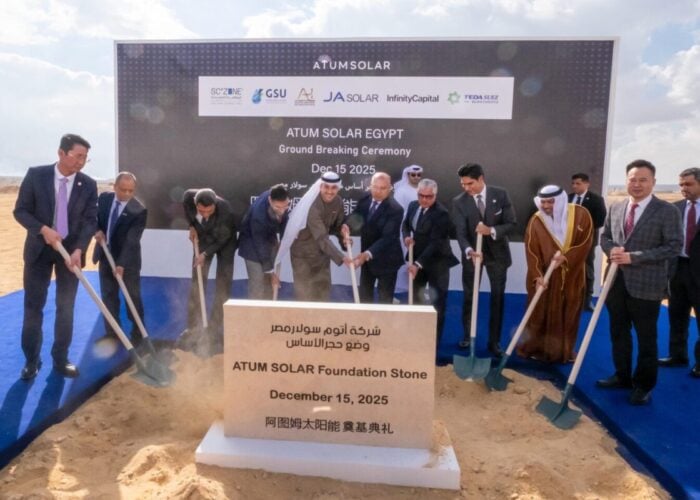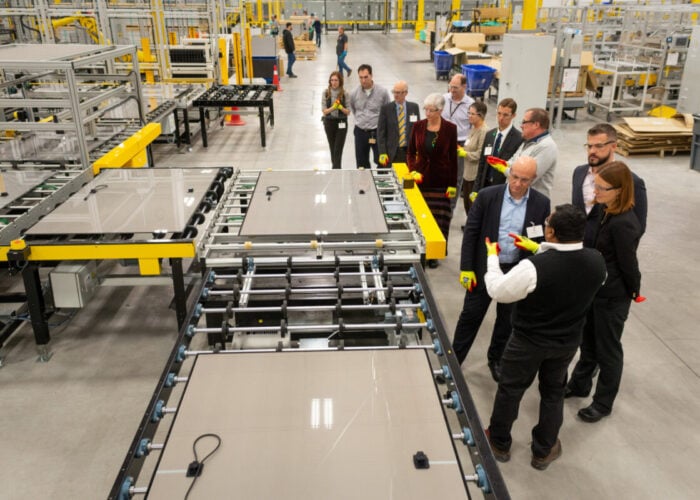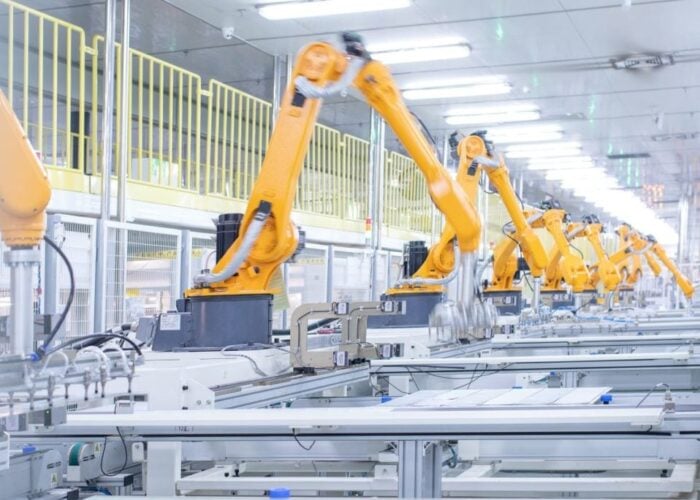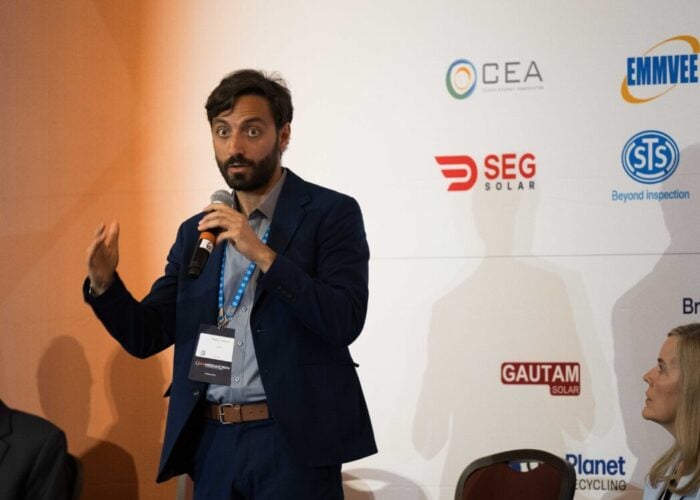
Throughout 2019 the LONGi Group issued a series of ambitious announcements on capacity expansions. A new round of expansion not only in wafers, but in cells and modules. Mono module projects are now expected to top 30GW. Reports suggest that more than 80% of the 30GW of installations, which will be completed by the end of 2020, will use 166mm modules.
Interviewed by PV Tech, LONGi Solar’s head of global marketing, Yingge Wang explained: “We have received over 10GW in letters of intent for the Hi-MO 4 module. The first quarter is already fully booked and the second quarter is nearly full. We are now working to secure orders for the second half of this year.”
Try Premium for just $1
- Full premium access for the first month at only $1
- Converts to an annual rate after 30 days unless cancelled
- Cancel anytime during the trial period
Premium Benefits
- Expert industry analysis and interviews
- Digital access to PV Tech Power journal
- Exclusive event discounts
Or get the full Premium subscription right away
Or continue reading this article for free
According to Wang, LONGi is in a position to supply sufficient 166mm products to the market, so there are no concerns about shortages. For maximum output exceeding 450W, LONGi is capable of ramping both production and supply of its high power products.
Without capacity support, it is difficult to market new products and technologies within the industry. LONGi has managed to resolve any bottlenecks, but in the meantime, the company plans to promote the Hi-MO 4 product in the global market as soon as possible. Taking India as an example, the company’s strategic plan sets a market target of over 2GW and a higher shipment goal for 166mm Hi-MO 4 modules.
With the increased capacity, LONGi has also set a higher full year module shipment target for 2020, aiming to exceed 20GW to enable effective capacity utilization.
“If LONGi is to meet its shipment target for 2020, we need to work hard in every market around the world. Our market share may vary with different markets, but the share in key markets must be maintained at over 15%.”
The globalization strategy implemented by the company since 2016 is now paying off. LONGi has established businesses in Europe, the United States, Latin America, India, Australia and Africa during this period and is also exploring other emerging markets, paving the way for the introduction of Hi-MO 4 around the world.
Wang continued: “There is room for growth in Europe and the United States and we are striving to secure a higher market share in these specific markets. In addition, there is significant growth potential in fast-growing markets like Central and East Africa. The installed capacity may fluctuate due to policy and investment impact but, closely monitoring these new trends, LONGi is planning to set up an office and a dedicated team in Dubai from where to serve regional customers.”
Having already established branches in countries like the United States, Japan, Germany, India and Australia, LONGi is now working on new installations in ‘Belt and Road’ countries such as Malaysia.
Who may be eliminated as a result of the accelerated size change?
The market is currently flooded with wafers of different sizes, ranging from 156.75mm to 210mm, and industry players are reacting differently to them. Hesitating over the next move, some choose to wait and see, while others decide to press ahead or start reinvesting. Both upstream and downstream industry chains are thrown into confusion as a result.
As the PV industry moves to embrace larger sizes, two camps (the 166mm and the 210mm) have gradually emerged. With a handful of leading companies joining in, the row over size began to heat up at the end of 2019.
Ramping up production and shipment of the 166mm module is a clear message sent by LONGi, although the company is in the meantime also experimenting with other sizes.
“From a manufacturing perspective, wafers of all sizes can be made. Assembling these wafers is just like building blocks. Technically, it is possible to manufacture a 500MW or 600MW module. Will a 210mm or 220mm wafer be a nice fit? They can be used, of course, if only within industrial boundaries,” Wang said.
“And the boundaries lie in the match between the wafers and the power generation system of power plants. Changing size is just like opening a Pandora's box. Once the box is opened, all supporting module parameters need to be changed accordingly. For example, will the increase in power, current and voltage accommodate electrical equipment, such as the inverter? How do you adjust cell quantities to suit the enlarged size? Is the rack size able to carry the capacity?
“As diversified as module technologies may seem, they are, in fact, becoming homogenous. Despite minor BOM differences at top manufacturers, products in general are not that different, whether they are glass, back plates, aluminum frames, EVAs or junction boxes. Product design and market know-how will prove to be the key. That’s the reason behind the 166mm push. We spent over half a year with our customers and partners to research into 166mm, which is considered to be the most economical and reasonable size choice at this stage.
“Our knowledge of 166mm is limited however. Some sizes are only theoretical calculations. There is still a lot to be explored within the industry chain. Our prior theoretical judgements are sometimes later found to be at variance with reality. Once a product is launched onto the market, there will come the question of how to run all these numbers.
“I don't think this is a question of technical competency, rather it is about coordination of the entire industry chain and response to market demand.”
Wang is sure that 166mm will enjoy advantages over other sizes this year and beyond. Products of other sizes may have certain strengths but need to be evaluated from the perspective of the entire industry chain.
He admitted that, in launching 166mm, LONGi was challenged by many, including inverter and rack suppliers, asset owners and EPC contractors, on issues related to size and weight. It is not at all easy to introduce a brand-new module to the market.
“The same is true with the launch of M1 & M2 at the end of December, 2012. It took us a long time to have the market agree on size. Size changes for any module are complex. As wafers are getting larger, the upstream, downstream and the whole market need to work together to launch a new module”.
Speaking of many companies opting for new modules of different sizes one after another, Wang highlighted the investment concerns over market factors.
He continued, “Module investment per GW is fairly high and the investors will take the payback period into consideration. You may come up with many innovative or even bold ideas, but don’t forget that there is still over 100GW of conventional capacity. What can we do with these outdated production lines which only allow for limited renovation? 166mm can be retrofitted to accommodate new capacities mentioned in our previous talk.
“Who will be eliminated as a result of the accelerated wafer size change? Will the end customers reap the benefits? LONGi still hopes to resolve issues over this aspect.”






